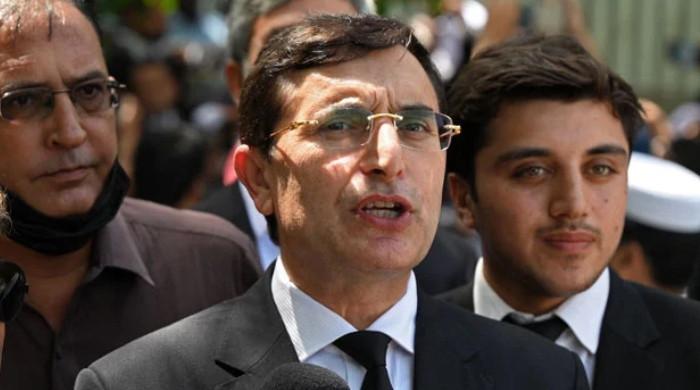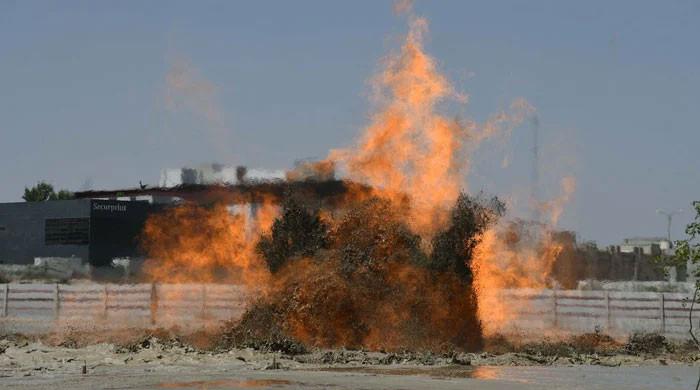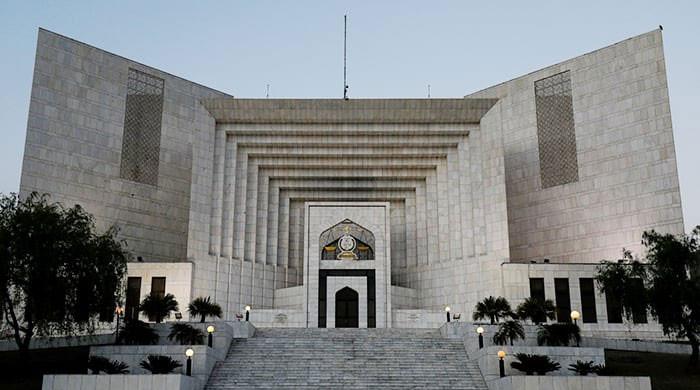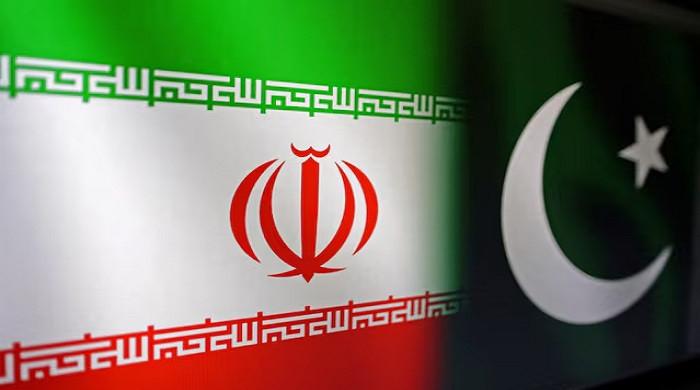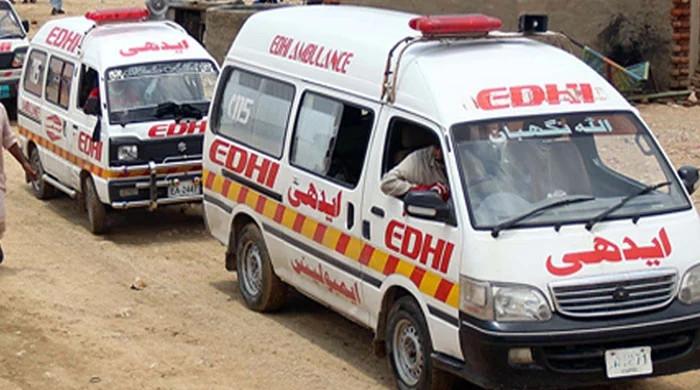Thar coal project — are we for development at the cost of life?
Along with dangers to miners and nearby dwellers, safer and alternative means of energy production discussed at consultation on mining
September 30, 2016
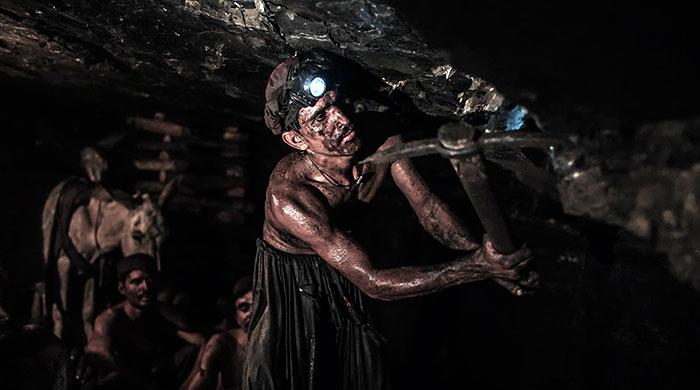
KARACHI: Drawing attention to the plight of miners in Pakistan, secretary general of the Human Rights Commission of Pakistan (HRCP), IA Rehman, brought to fore the harrowing environmental impacts of land excavation on communities residing in areas where mining was carried out, while addressing the two-day All Pakistan Consultation on Mining.
Considering the environmental hazards, Rehman while speaking of the contribution to GDP through mining, observed that mining and manufacturing sectors were the second largest contributors to the economy yet the subject was treated casually.
So much so that to date, laws like the 1923 Mines Act was being followed in which showers for miners were identified as ‘facilities’ to be ensured.
“We are all aware of how miners work on low wages, without proper equipment and also end up losing their lives; but we are still to do something concrete to safeguard their rights,” he said.
Starting off with Sindh, he spoke of Thar, known for its contribution to energy sector through coal production, yet the beneficiaries were blissfully unaware of the resulting damage in the area.
“You may have Thar coal but no Thar — that’s the cost we are to bear if we keep exploiting the land for the sake of development.”
Who pays the price?
Urban planner, architect and activist, Arif Hassan put forward crucial questions regarding the impact of the Thar coal mining project on its communities.
In a brief background about the region, he said Thar had a pastoral economy where the lands were maintained by upper caste Hindus. But following the two wars with India after partition, Hindus migrated making the tenants the de facto owners of the land.
The new owners unlike the previous ones, failed to look after the lands as the 1987 drought and emergence of the non-governmental organisations (NGOs) led to the creation of a cash economy, Hassan stated.
As of now, the land has 200,000 trees, 20,000 sweet water wells and 12 natural ponds which had to be protected from the Thar project, which would have adverse affects on the culture and demography of the region.
“A part of the China-Pakistan Economic Corridor (CPEC), the Thar coal project carried immense importance, but so do its repercussions.”
Whether there even was a need for the project, considering the cost of displacement, demographic change and affects on environment, Hassan opined, that there were alternative ways to produce energy, solar farms being an option in lieu of coal power.
“But in the neo-liberal world, investment is heavily relied on so little consideration is being paid to alternative solutions. By 2018, China would stop producing machinery for this technology, so what would be the aftermath?”
He further highlighted the absence of opinions of communities which were to brace for direct impacts. The reason for which, Hassan noted was because both, the government and corporate sectors, were not concerned about the dwellers, and so by the time people would realise the consequences of aqua depletion, it would be too late.
He further said that many a time people were not given a land, rather were monetarily compensated which was of no use since they were coerced into not making good use of the money; while there lands were encroached upon.
HRCP representative and social activist Anis Haroon, affirmed that the Thar coal project was not helping the Tharis.
She stated that there were several areas where after check posts areas were fully developed, and while RO plants in the rest of the Thar were yet to be made functional, water supply to those specific areas was smooth.
However, Sindh Engro Mining Company’s director business development and commercial, Shahab Qader, tried to explain how the private company was helping the people by providing residence to all who had been displaced.
He claimed that the company was following all risk aversion policies, help for which had been sought from Australian consultants as no law pertaining to safety measures could be applied.
Qader insisted that coal energy was a reasonable option if compared to importing fuel; he was, however, unable to convince the audience on why non-renewable energy was better than renewable energy.
‘Clean coal: a lie’
Qazi Ali Athar, lawyer and environmental activist, shed light on the rising levels of carbon emission by Pakistan.
“Carbon emission would lead to extreme temperatures, which would not only result in the damage of crops, but with one-fourth of desert population living in the coal region, the results can be harrowing because there was no such thing as clean coal as claimed by the government in 2007,” he said.
He also mentioned that because of emissions by India and China, a toxic fog had been formed in the atmosphere around the region of Punjab, especially Lahore.
However, Athar also reiterated that while all other countries were winding up coal power supply and switching to wind, water or solar power, Pakistan was excavating its lands to get more coal.
Formation of laws
Inspector Mines, Syed Muhammed Waseem, said sectoral guidelines were needed to keep a tab on small mines in the province.
The miners are affected by noise, humidity, heat and vibration but it was extremely difficult to help them, because the in-charge had little or no authority, he stated.
“It was also impossible to go for surveillance since majority of the times nobody knows who the owner is.”
With 11 inspectors and 1,160 leases granted without proper documentation, it had become an uphill task to file cases, resulting in the usual delay of justice. He added that a census of small mines should be done and proper technical support should be provided to avoid any unforeseen event.
Representating Tharis, a social worker and miner, Heera, along with his wife, Resham, gave an insight on how ‘Qabza groups’ would take away lands belonging to the people, "Our lands are usurped and because the law is weak we are asked to file petitions with the DCO, who is unable to help us. We break stones by using tools used in making roads and are paid only Rs500."
Comparing the rate of payment, he further explained that one truck carried 7 secra of coal, one secra costs Rs5,000 which makes the worth of one truck Rs35,000.
—Originally published in The News




